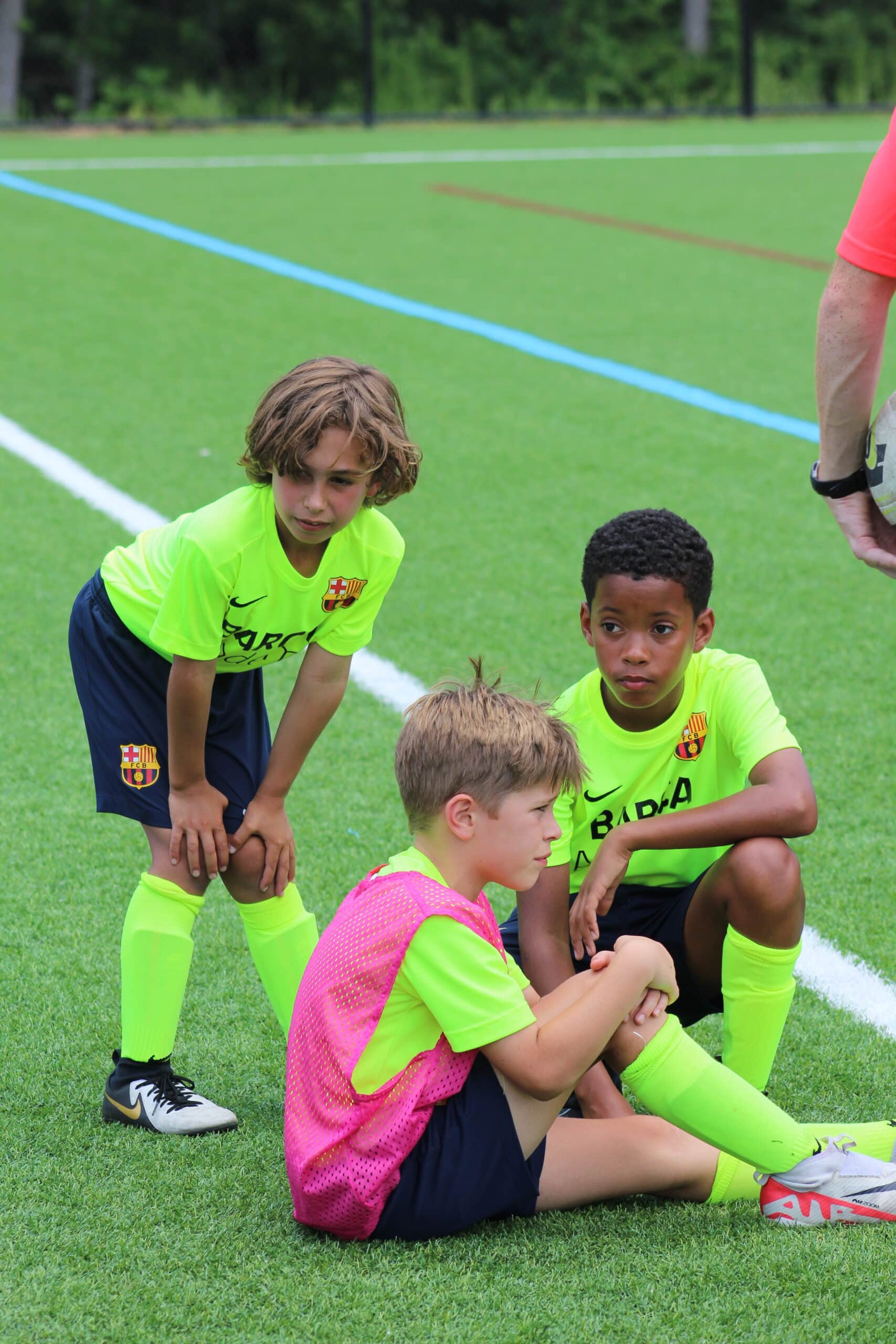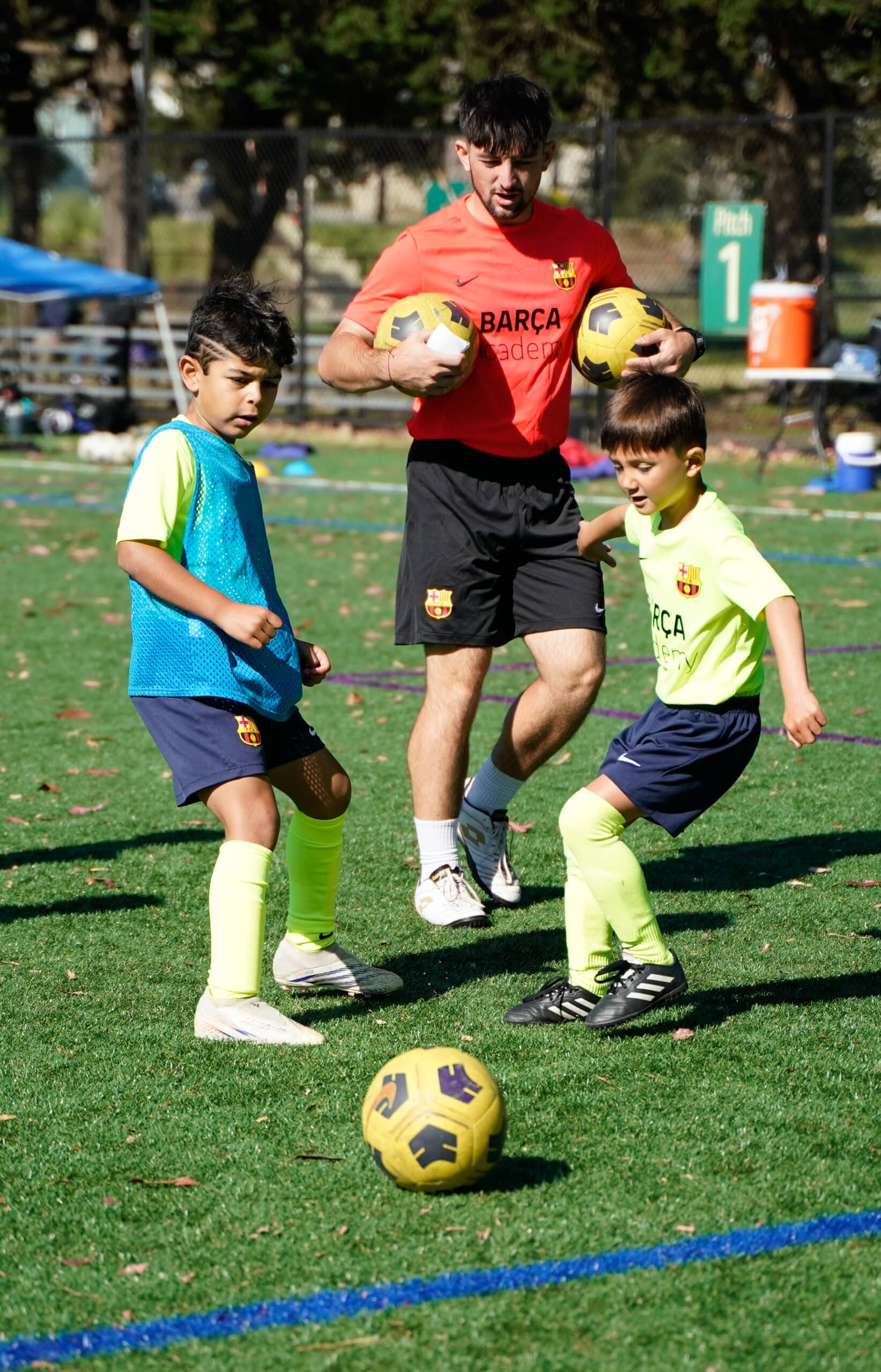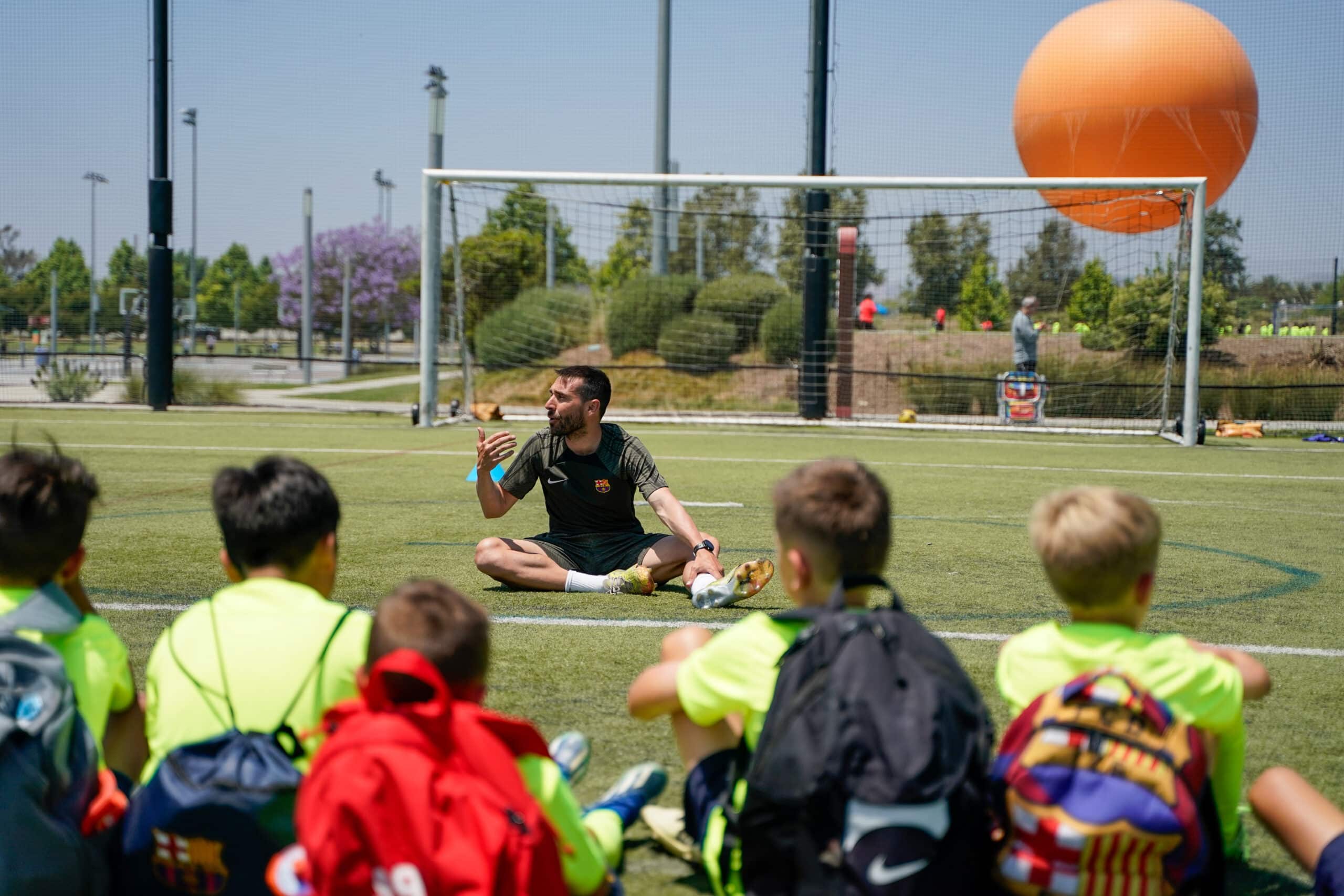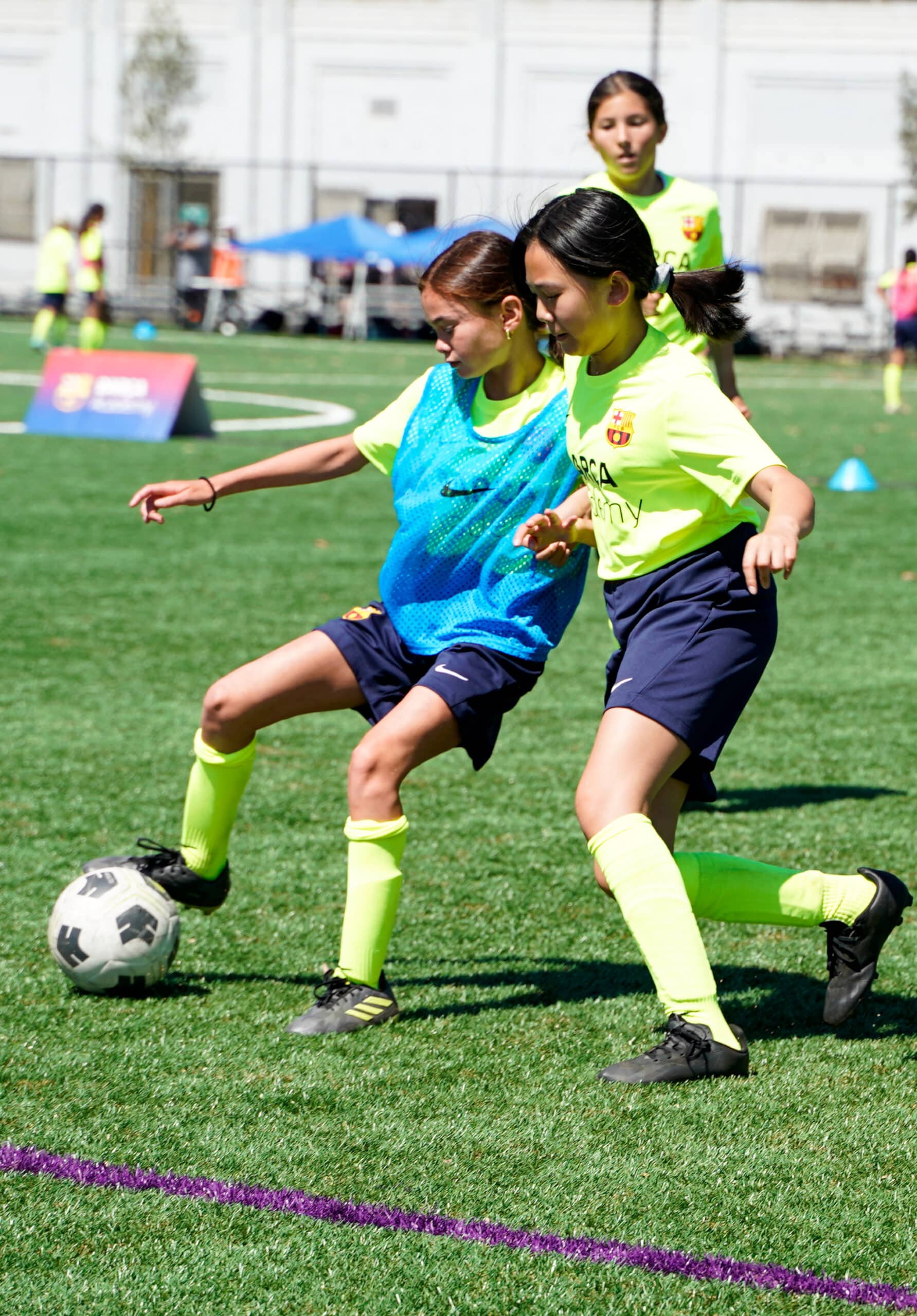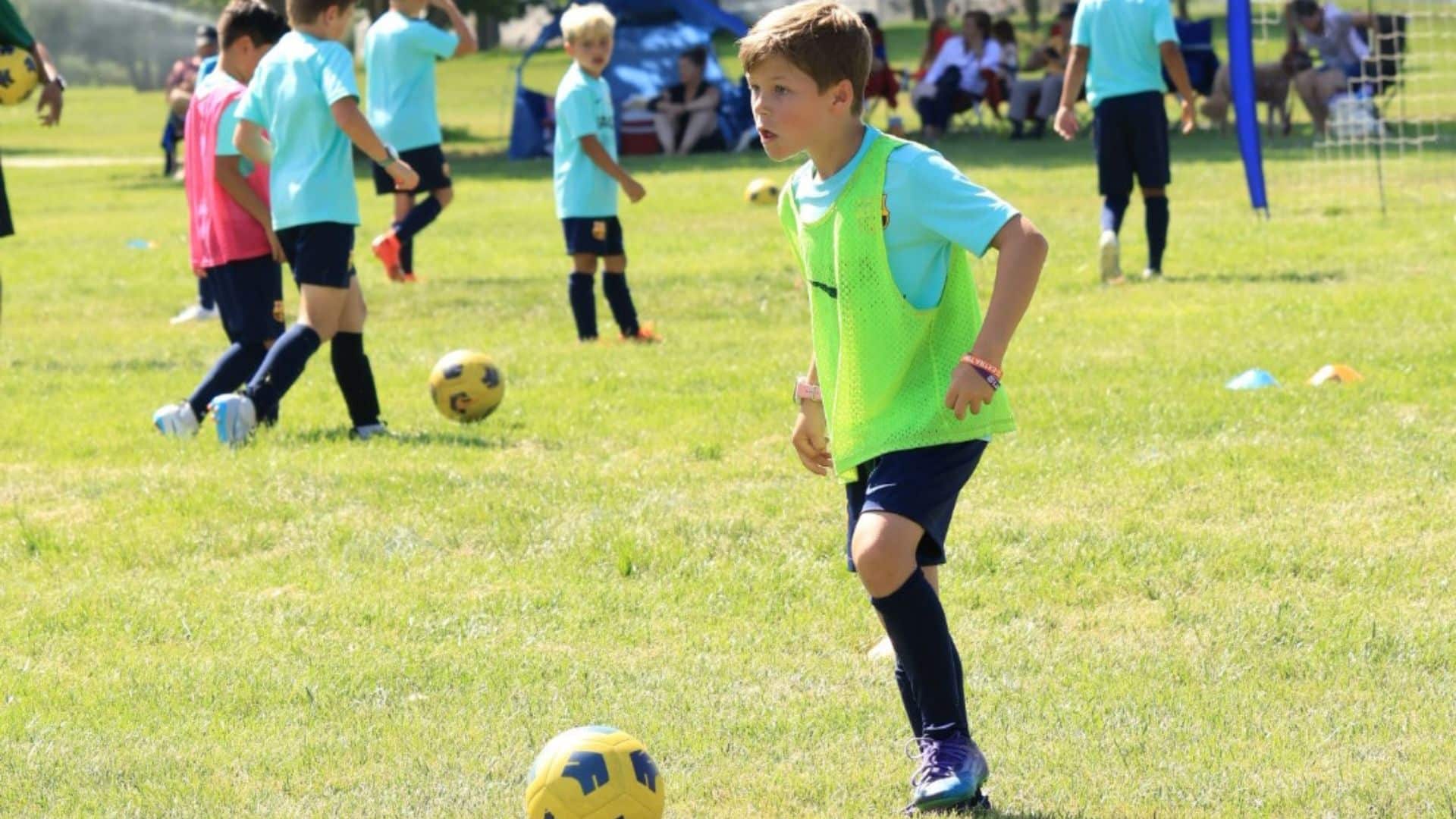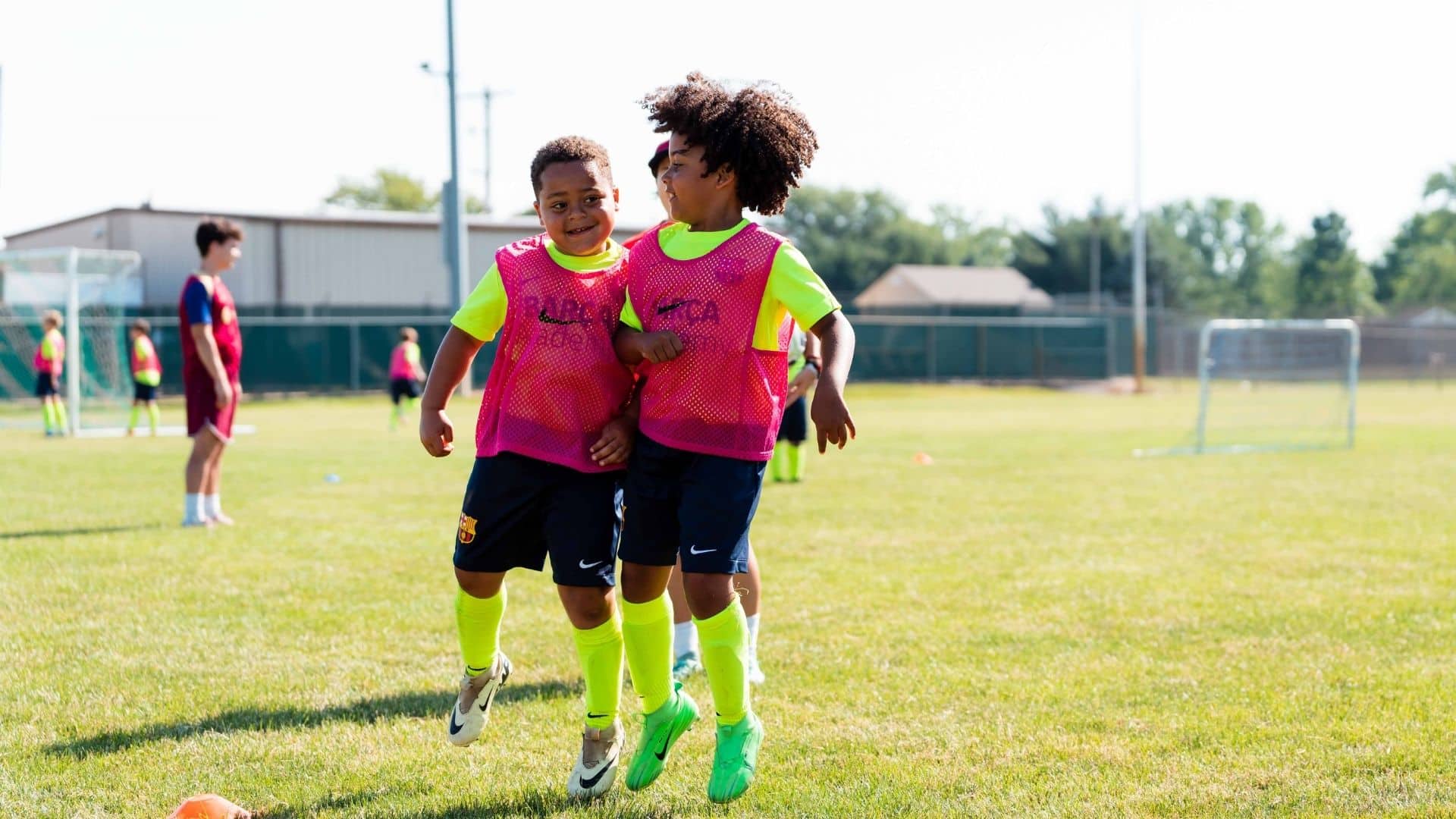The selection of the correct soccer ball size by age is integral to our academy’s approach, providing a solid foundation for aspiring soccer stars. This practice extends beyond the academy, resonating throughout youth soccer nationwide.
There’s an often-overlooked aspect that plays a pivotal role in a young athlete’s progress: the (right) size of the soccer ball by age and skills. The choice of ball size is crucial for an optimal gaming experience and can significantly influence a player’s performance on the field.
From the youngest beginners taking their first steps in soccer to the most experienced players, discover how ball size is tailored to each stage of development in this sport. Let’s dive into the world of soccer ball sizes by age, a topic that holds the key to unlocking a player’s potential and safeguarding their well-being on the pitch.
Understanding the Basics
The Standard Soccer Ball
The standard size of a soccer ball used in professional matches, as governed by FIFA, is known as “Size 5.” It has a circumference of 68–70 centimeters (26–27 inches) and a weight of approximately 410–450 grams (14-16 ounces). These dimensions have been carefully designed to suit the physical demands and skills of adult players on the international stage.
The standard “Size 5” soccer ball is tailored to the strength, agility, and playing style of adult athletes. Its larger circumference and slightly heavier weight make it ideal for powerful kicks, precise control, and quick passes over long distances.
The relevance of soccer ball sizes by age
Using the correct soccer ball size is not a trivial matter; it is a decisive factor in nurturing young soccer talents. Size matters at different stages of a player’s evolution, and how it affects player growth, skill acquisition, and injury prevention. For instance, for toddlers, the reduced weight and size allow them to develop their fine motor skills, including coordination and balance.
When a young player uses a ball that is too large and heavy for their age, they are likely to struggle with basic skills such as dribbling, passing, and shooting. By using age-appropriate ball sizes, players can more effectively evolve these skills, building a strong foundation for their future in the sport.
Player safety is of paramount concern, and using the right-sized ball plays a role in injury prevention. Young players who attempt to control or kick a ball that is too large may overexert themselves, leading to muscle strains or even joint injuries. On the other hand, a ball that is too small for older players may lead to overexertion in an attempt to generate power in their kicks.
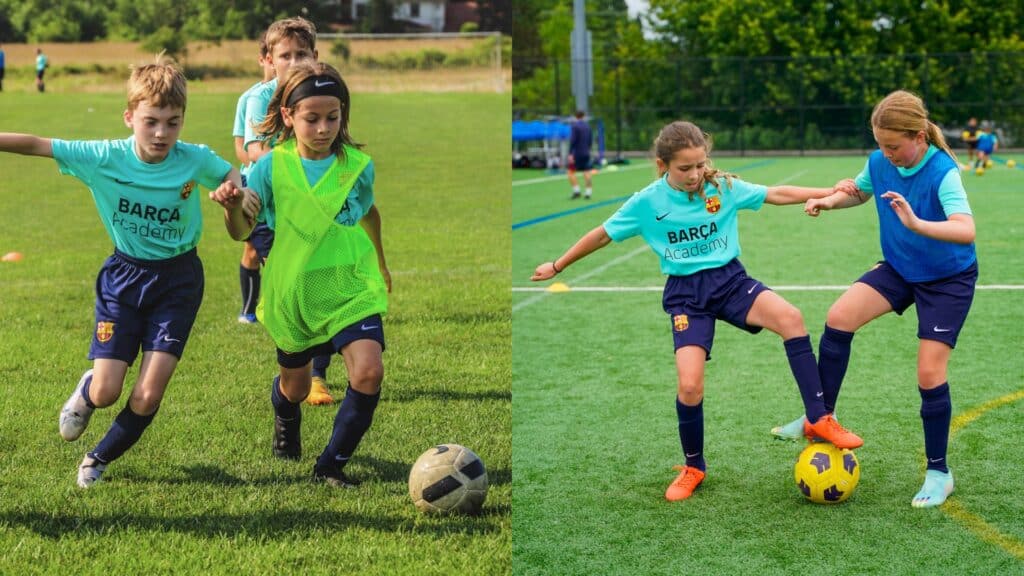
Age-Appropriate Ball Sizes
The transition from a toddler’s first steps to a teenager’s pursuit of soccer stardom is marked by significant physical, cognitive, and motor skill development. As young players grow, their abilities and needs change, and so does the size of the soccer ball that suits them best.
Toddlers (Ages 2-4)
For toddlers, the ideal soccer ball size is the diminutive “Size 3” ball. This ball is much smaller and lighter compared to the standard soccer ball. It typically has a circumference of about 58–60 centimeters (23–24 inches) and weighs around 280–320 grams (10-12 ounces).
The choice of a “Size 3” soccer ball for toddlers is not just a matter of convenience but a critical component in their introduction to the world of soccer. By starting with an age-appropriate ball, toddlers can safely and joyfully embark on their soccer adventure, laying the foundation for their future unfolding in the sport.
U6-U8 (Ages 5-7)
For players in the U6-U8 age group, the recommended soccer ball size is the “Size 4” ball. This ball is intermediate in size and weight compared to the toddler’s “Size 3” ball and the standard “Size 5” ball. It typically has a circumference of about 62–64 centimeters (24.4-25.2 inches) and weighs around 320–360 grams (11-12.7 ounces).
The introduction of the “Size 4” soccer ball for U6-U8 players is a pivotal step in their soccer journey. This transition not only enhances their skills but also prepares them for more competitive soccer environments as they grow older.
U10-U12 (Ages 8-11)
Players in the U10-U12 age range typically use a “Size 4” or “Size 5” soccer ball. This transition depends on factors such as the players’ physical development, skill level, and the league’s regulations. The “Size 5” ball is the standard size used in professional matches, while the “Size 4” ball is slightly smaller and lighter, acting as an intermediate size.
The transition to a “Size 4” or “Size 5” ball for U10-U12 players is an important moment in their soccer journey. It signifies their growing maturity, both physically and in terms of soccer skills. Barça Academy recognizes the importance of this transition and ensures that young athletes receive the appropriate-sized ball, setting them on the path to becoming confident and competent soccer players.
U13 and Above (Ages 12+)
As players enter their teenage years and advance in their soccer journey, the progression to the full-size soccer ball, also known as “Size 5,” is a momentous step.
The use of a “Size 5” ball signifies the transition to a more adult-like form of the game. It mirrors the equipment used in professional soccer, preparing young players for the physical and technical demands of the sport as they continue to mature.
The “Size 5” ball’s size and weight require players to further develop their technique. This larger and heavier ball challenges them to refine their dribbling, passing, and shooting skills, promoting a greater level of precision and control. It signifies their growth and maturity as they approach adulthood and aspire to reach higher levels in the sport.

In the ever-evolving journey of young soccer players, the transition through age-appropriate ball sizes plays a pivotal role in their development. As we’ve explored, from the toddler’s first touches with a “Size 3” ball to the U10-U12 players handling a “Size 4” ball, and eventually, the U13 and above athletes embracing the full-sized “Size 5” ball, each phase serves a specific purpose. It refines their skills, boosts their confidence, prepares them for competitive play, and ensures their physical well-being.





